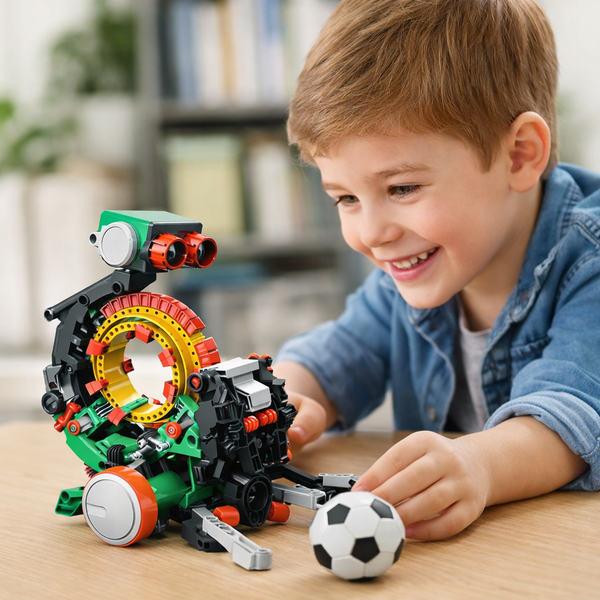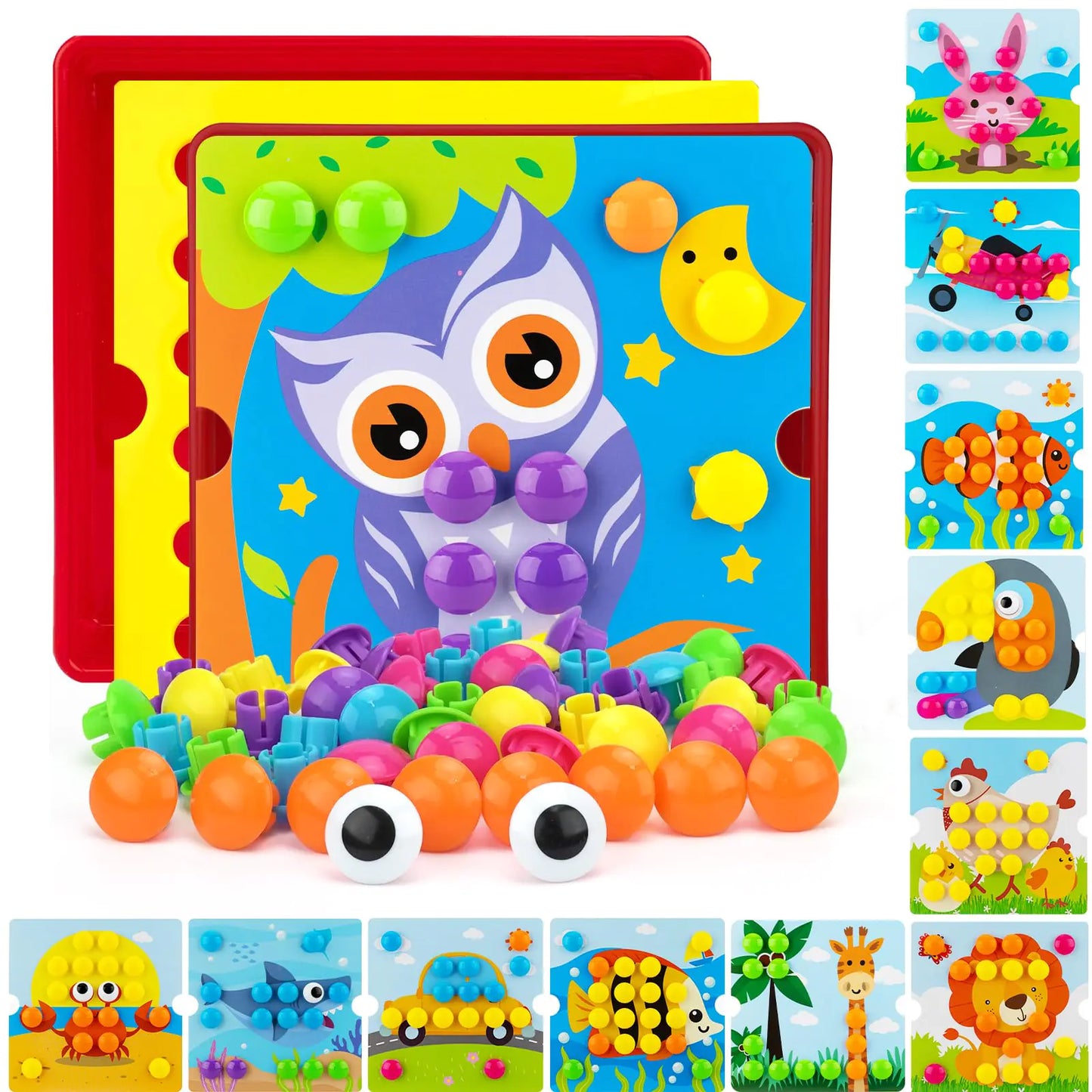Selecting the perfect educational toys for children can be a delightful journey to enhance their learning experience. The top 5 educational toys are crafted to captivate and educate, offering a dynamic addition to a youngster's play. These toys aren't just amusing, but also instrumental in nurturing pivotal abilities such as problem-solving, critical thinking, and artistic expression. With an array of choices at hand, guardians and educators can pinpoint the optimal educational playthings that resonate with a child's curiosities and developmental needs.
1. Cause-and-Effect Pop-Up Toy

I've always been looking for the perfect educational toy that balances fun and learning, and I hit the jackpot with the cause-and-effect pop-up toy. It's a simple yet brilliant concept: colorful buttons that, when pressed or turned, make adorable animals pop up! This toy is a fantastic way for toddlers to grasp the idea of cause and effect, a cornerstone of cognitive development.
The joy on my little one's faces when they figure out the 'trick' to each pop-up is priceless. It's not just about the surprise; it's about understanding that their actions have direct outcomes. And the best part? It's sound-free, giving parents a much-needed break from the constant barrage of noisy toys.
- Encourages pattern recognition
- Develops muscle memory
- Enhances problem-solving skills
Educational toys foster language development, creativity, and cognitive skills in children. Choose age-appropriate toys to support growth and learning through play.
As a parent, I appreciate toys that offer hands-on learning experiences without overstimulating my child. The cause-and-effect pop-up toy does just that, and it's a hit not only with my kid but with me, too!
2. Pop Tubes

I've got to tell you about these Pop Tubes! They're not just fun to play with but also fantastic for your kids' language development. The crinkly sound they make when stretched or squished is music to little ears, encouraging vocal play as kids mimic the noises.
Here's why I'm a fan:
- They promote auditory stimulation, which is crucial for language acquisition.
- Pushing and pulling the tubes helps with fine motor skills and bilateral coordination.
- It's a playful way to teach cause and effect, a foundational concept for understanding language.
Pop Tubes are a simple yet effective tool for engaging your child in a world of sounds and tactile experiences that foster linguistic skills.
And guess what? They're even considered one of the best learning toys for autistic kids, enhancing their linguistic skills. So, whether your child is neurotypical or on the autism spectrum, these tubes can be a valuable addition to their playtime.
3. Montessori Pull Toy

I recently stumbled upon a gem for my little one's playtime - the Montessori Pull Toy. It's been a game-changer! Not only is it captivating with its vibrant colors and varied textures, but it's also a powerhouse in terms of developmental benefits. This toy is a sensory delight, offering a hands-on experience that nurtures fine motor skills and bilateral coordination.
I adore the Montessori toys' ability to blend learning with fun. They're designed to encourage kids to explore and express themselves, which is crucial for language development. With the Montessori Pull Toy, I've noticed my child is more engaged and eager to communicate during play.
Here's a quick rundown of why it's a must-have:
- Encourages exploration and curiosity
- Enhances fine motor skills
- Promotes bilateral coordination
- Sparks joy and engagement
Remember, the goal is to make learning a joyful journey filled with discovery. And with the right toy, like the Montessori Pull Toy, you're setting the stage for a world of learning and laughter.
Discover the joy of learning and play with our Montessori Pull Toy, designed to inspire creativity and enhance fine motor skills in young children. This toy is a must-have for any child's developmental journey, as it is perfect for fostering critical thinking and sensory stimulation. Don't wait to give your child the gift of imaginative play and a sense of achievement. Visit our website now to add this fabulous toy to your collection, and read the glowing testimonials from our satisfied customers!
Wrapping It Up: The Power of Play in Language Development
Alright, folks, we've had a blast exploring the world of educational toys that are not only entertaining but also effective in boosting language skills. From sensory delights to brain-tickling puzzles, these toys are the secret sauce to turning playtime into a treasure trove of learning. Remember, the real magic happens when kids have so much fun that they don't even realize they're getting a brain workout. So, go ahead and sprinkle some of these educational gems into your little one's toy box, and watch their language skills blossom. Happy playing and learning!
What are educational toys, and how do they support language development?
Educational toys are designed to promote learning and skill development in children. They support language development by providing opportunities for kids to engage in play that stimulates communication, vocabulary expansion, and understanding of language concepts.
What makes a pop-up toy educational?
A pop-up toy is educational because it encourages cause-and-effect learning. When a child acts, the toy responds, helping the child understand the relationship between actions and outcomes. This interaction also promotes language development as children learn to express their experiences.
How do Pop Tubes help with language development?
Pop Tubes aid language development by stimulating the auditory and tactile senses, which are linked to communication skills. They also encourage children to describe their actions and the sounds they hear, thereby enhancing their descriptive language and auditory processing.
Can Montessori pull-toy improvements enhance a child's language skills?
Yes, Montessori pull toys can improve language skills by promoting interactive play. As children engage with these toys, they often narrate their actions and participate in imaginative dialogue, which enhances their vocabulary and sentence structure.
What age group benefits most from educational toys for language development?
While educational toys can benefit children of all ages, toddlers and preschoolers (ages 1-5) often see the most significant impact on language development, as this is a critical period for language acquisition.
Are there educational toys suitable for children with special needs?
Yes, there are educational toys specifically designed for children with special needs. These toys often feature elements that cater to diverse learning styles and abilities, supporting children with language, sensory processing, and communication challenges.
What should parents look for when selecting educational toys to support language development?
Parents should look for engaging, age-appropriate, and relevant toys that align with the child's interests. Toys that encourage interaction, storytelling, and role-playing are particularly beneficial for language development.
How can caregivers integrate educational toys into a child's daily routine?
Caregivers can integrate educational toys into a child's routine by setting aside dedicated playtime, using the toys to create learning opportunities, and encouraging children to explore and communicate during play. It's also helpful to rotate toys to maintain interest.













